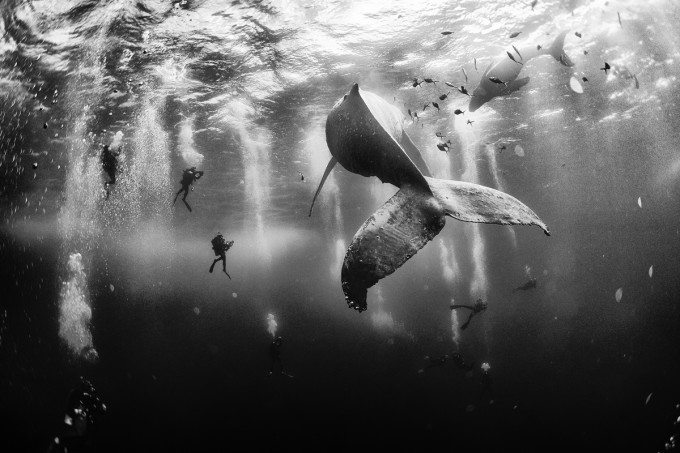
When National Geographic announced the winners of its Traveler Photo Contest, all anyone could talk about was the first place image: a magnificent underwater image replete with whales, fish, divers and bursts of water. The divers, in various stages of descent, are minuscule compared to the enormous creatures. People often misuse the word “epic” to describe things that don’t nearly meet the requirements of that word, but in this case, I feel fully comfortable saying that it is an epic photograph. Perhaps one of the most remarkable things about it was that the photographer, Anuar Patjane, shot it with a point-and-shoot, the Sony RX100. Of course, it’s only a part of what makes the image, but it’s an aspect that says a great deal.
Some people often attribute more to a camera than they should, citing its size or its price point as an indication that it’s a more serious camera capable of taking better photos than something smaller or cheaper. It is true that something like the Canon 1DX will take qualitatively better photos than the company’s cheapest point-and-shoot. It’s also true that certain areas of photography require certain types of equipment. If you’re photographing the Kentucky Derby, you’ll need a capable DSLR and a super telephoto lens. There really isn’t a way around that.
For the rest of us, however, the requirements aren’t as strict, though you’ll find camera snobbery in many circles. With a photo like Patjane’s above, you might think he had a powerful DSLR with an underwater rig, and that’s a reasonable assumption. A great deal of wildlife photography is done with powerful equipment, both in lens and body choices often totaling many thousands of dollars. Much to my surprise and that of others is that Patjane used a Sony RX100 to capture the scene.
Granted, the RX100 isn’t your garden variety point-and-shoot. With an impressive aperture range and 20.1 MP 1-inch sensor, it’s a powerful little machine that is currently in its fourth iteration. Even so, it’s a camera many wouldn’t consider taking seriously, or rather, it’s not one they’d use as the primary camera. Patjane, however, did use the RX100 as his primary camera, and he probably didn’t have the luxury of bringing a well-stocked camera bag during his descent near the Revillagigedo Islands.
His image is a testament to the fact that you don’t need an elaborate camera to take great photographs. Granted, whales, divers and beautiful light streaming down from the surface of the water certainly help make for a compelling scene for any camera, but it is precisely because he used an RX100 that makes the case for the camera being mostly irrelevant. By irrelevant, I mean that a photographer with enough knowhow will be able to create a compelling image with any camera, from a pinhole to an 8×10 view camera.
If the next camera you’ve got your eye on is more than you anticipate spending, reevaluate what it is about that camera specifically that has your attention. It’s more about what you’re shooting than what you’re shooting with. Of course, it’s disingenuous to say the camera doesn’t matter. It obviously matters. Without it, there are no pictures, but there’s leeway in what you can use to get the pictures that you want. If you’re looking to take a dive, know that you won’t necessarily need a hulking DSLR.

